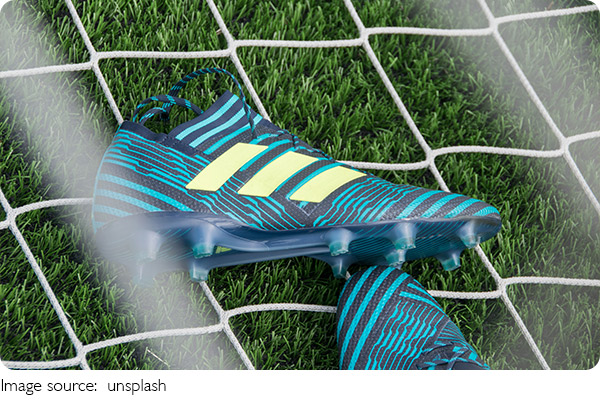The Future of Sportswear

If your gear gives you a 0.1-second edge, is that still talent—or tech? In elite sports today, materials science and smart technology are quietly transforming how athletes train, compete, and even break records.
So, whether you're a weekend runner or a performance analyst, it's time we all pay closer attention to what's inside the shoes, swimsuits, and rackets.
The Era of Performance-Enhancing Equipment
For years, sports science focused on nutrition and biomechanics. Now, equipment itself is becoming a game-changer. We're talking about carbon-fiber midsoles that make runners faster, experimental swimsuits with embedded AI sensors are under development, and tennis rackets that read your swing in real-time. These aren't just accessories—they're performance tools.
So let's break it down with real-world examples.
1. Carbon-Fiber Shoes: The 4% Revolution
Remember when Eliud Kipchoge ran the marathon in under two hours in 2019? He was wearing Nike's Vaporfly Next%, a carbon-fiber plated shoe combined with a lightweight foam midsole. While the athlete's talent was unquestionable, the shoe's design played a measurable role in reducing energy loss and improving running economy by up to 4%, according to a study in Sports Medicine.
Now, every major brand—Adidas, Asics, Saucony—has its own carbon-plated model. These shoes don't just reduce fatigue; they change how runners pace, train, and recover. In fact, World Athletics had to step in and regulate shoe thickness and design to ensure fair play.
Key impact:
• Reduces energy loss during toe-off.
• Improves stride efficiency.
• Potentially alters race outcomes by milliseconds.
2. Smart Swimsuits: Data Beneath the Surface
Swimming is a sport of milliseconds. A slightly longer glide or better body position can be the difference between silver and gold. That's where smart swimsuits come in. Companies like AquaLab and Wearable X have developed suits with embedded sensors that track Technique rate, body alignment, and drag resistance.
Coaches can now get live data during training sessions to correct form instantly. Swimmers like Olympic medalist Kyle Chalmers have used AI swimwear to refine turns and breathing technique.
Key impact:
• Real-time biomechanical feedback.
• Custom training plans based on swimmer-specific data.
• Improved Technique precision and lap consistency.
3. Intelligent Tennis Rackets: Beyond Muscle Memory
Training for tennis used to mean endless repetition. Now, players can use rackets like the Babolat Play Pure Drive, equipped with sensors in the handle that track swing speed, spin, impact zone, and consistency.
Players from junior levels up to professionals are using these rackets to understand their habits. Are they hitting too many shots off-center? Is their topspin dropping in later sets? The data doesn't lie—and it helps coaches fine-tune performance without guesswork.
Key impact:
• Accurate swing analysis.
• Injury prevention through better technique.
• Measurable progression for amateurs and pros alike.
4. Compression Wear with Embedded Tech
Beyond shoes and rackets, athletes are turning to smart fabrics. Companies like Athos and Hexoskin create compression shirts and leggings with integrated EMG sensors to track muscle activation, breathing rate, and posture.
Cyclists and sprinters use these garments to pinpoint inefficiencies. A slight imbalance in quad activation, for example, might be the root cause of chronic knee pain—and these suits can catch it before it becomes an injury.
Why Materials Matter: The Tech Behind the Tools
It's not just about embedding sensors. The actual materials themselves are doing heavy lifting:
• Graphene is being used in tennis rackets for added strength without extra weight.
• Liquid crystal polymers in bike frames make them stiff yet vibration-dampening.
• Aerogel padding in protective gear absorbs shock without bulking up.
All of these materials reduce fatigue, improve speed, and protect against injury—quietly extending athletes' careers and amplifying their edge.

Is This Fair? The Ethics of Tech Advantage
This question is already stirring debate.
1. When Nike's carbon shoes were first introduced, critics called them "mechanical doping."
2. World Athletics had to restrict tech specs after athletes in advanced suits broke too many records.
3. In tennis, some purists argue that smart gear removes the intuition and artistry of the game.
Where This Is Headed: Augmented Training
We're moving toward a future where athletes train in "digital twins"—virtual models of their performance generated by wearable sensors. Coaches could simulate different race scenarios or injury risks using real-time data and predictive AI. It won't be long before national teams train with full sensor suits and VR environments tuned to mimic their opponents' tactics.
For amateur athletes, this could trickle down to affordable smart insoles, AI workout apps, and at-home biometric gear.
Final Thoughts: Are You Training Smarter?
So, Lykkers—whether you're a weekend runner, a tennis hobbyist, or someone who's just curious about where sports is heading—the truth is clear: your gear isn't just supporting your movement anymore. It's studying it, optimizing it, and in some cases, improving it faster than human coaching ever could.
If you had the chance to use smart gear for your sport or workout, would you take it—or do you prefer the old-school grind? Let's talk.
-
 Messi Ronaldo RivalryMessi vs. Ronaldo: Remember These Iconic Moments That Shaped Football History?
Messi Ronaldo RivalryMessi vs. Ronaldo: Remember These Iconic Moments That Shaped Football History? -
 Football Fitness SecretsHow Do Football Players Stay in Top Shape All Year? Their Daily Routine Might Surprise You!
Football Fitness SecretsHow Do Football Players Stay in Top Shape All Year? Their Daily Routine Might Surprise You! -
 Basketball's Iconic TrioHow Jordan, Kobe, and LeBron Redefined Basketball Forever — Whose Impact Was the Greatest?
Basketball's Iconic TrioHow Jordan, Kobe, and LeBron Redefined Basketball Forever — Whose Impact Was the Greatest?